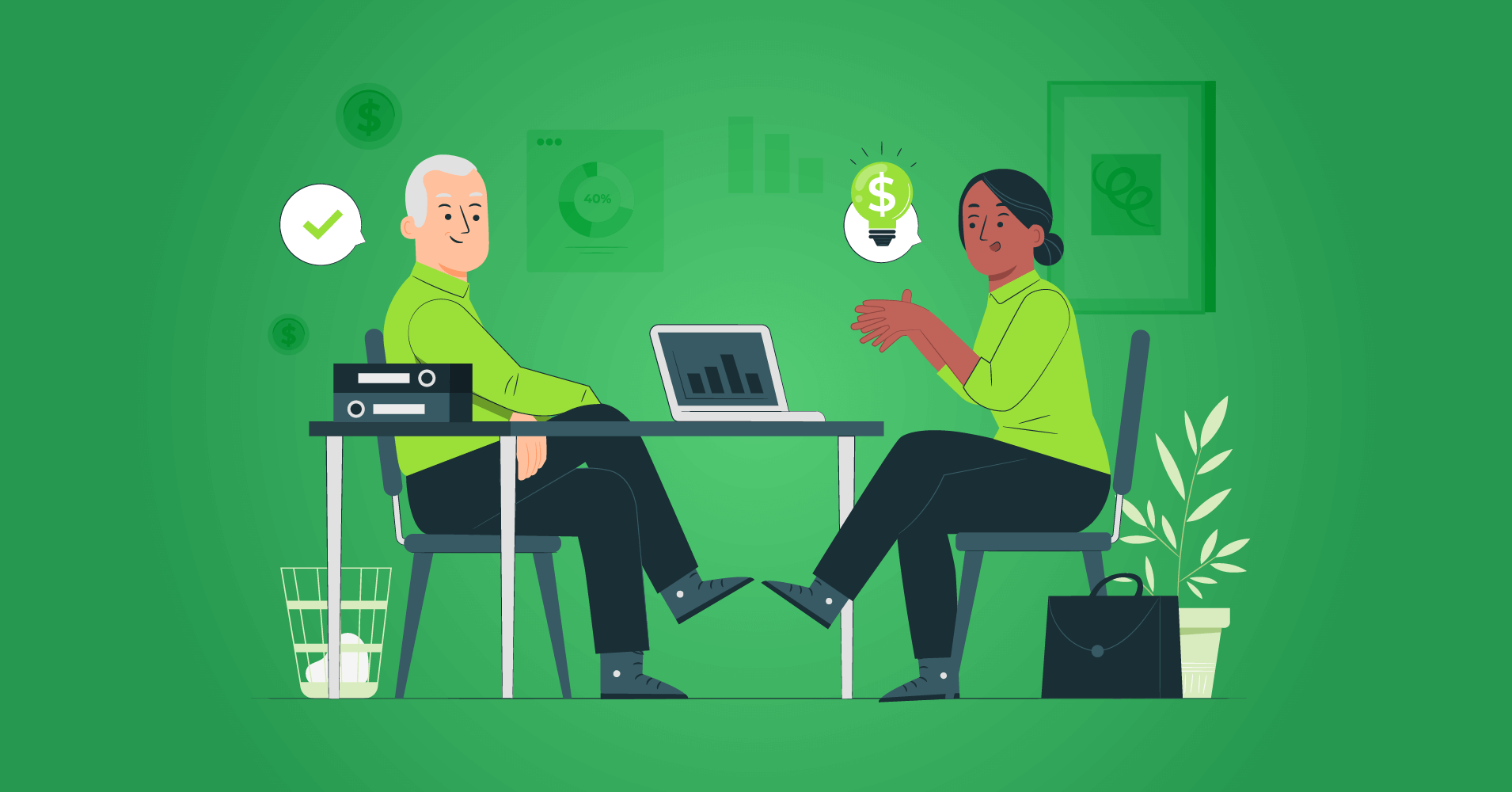
The Art of Follow Up in Customer Service
By Rasel Siddiqe
September 27, 2022
Last Modified: November 13, 2025
Every time a customer contacts your business it’s an opportunity. You’ve probably heard this a lot by now! But what do you do with this opportunity? It all depends on how good your customer service team is in multiple aspects. One of these aspects is customer service follow up.
Not every customer contacts your business with the same motivation. Some do it out of necessity while others may do it out of curiosity. The reason behind calling you changes a lot about how you should interact with the customer. The only thing that doesn’t change is the need to follow up on that interaction.
In this article, we’re going to focus on what follow up is in customer service, why it’s important, and how you can follow up with customers effectively. As a bonus, we’ll show you some cool ways to make following up a routine and simple task.
What is follow up in customer service?
Follow up in customer service means getting back in touch with a customer who recently contacted your service team. A follow up can be anything from a call, email, or even a letter. There’s no best way to do this because they all work in their own way.
Follow up interactions in customer service generally contain the following elements,
- A show of gratitude
- Some way to gather customer feedback
- Asking for suggestions
Importance of following up in customer service
So why is it important to follow up on customers? Well, as we said earlier, it’s to build on the opportunity created through customer queries. To make the most out of a customer interaction it’s crucial to implement customer follow up in your customer service strategy. Let’s check out what that achieves for your business,
Repeat Business
Following up on customers tells them two important things. One, you care about the individual, and two, you’re willing to set time aside for them. It basically shows that you don’t take customer satisfaction as an afterthought but as a chance to build relations.
Feeling connected with a brand is proven to invoke customer loyalty. This loyalty is what keeps your customers coming back to you. Yes, you can achieve this with simply good service. However, when you follow up on a customer it’s actually a chance to sell once again without the customer having to ask for it.
The feedback you get from following up on customers is the perfect chance to find the next best product for them. A well-placed upsell tactic goes perfectly with your follow-up. This means more repeat business without doing any heavy lifting.
Customer Experience
Following up on customers is the perfect ending to a proper date. Even if you got them flowers and the dinner was perfect. You’d still want to check in on them if they got home okay. While the whole date might feel like a mutual activity, this call to check in makes the other party feel a bit more special. More than what they got from the date itself.
Customer follow up is no different. You get a customer complaint and solve it promptly. That’s great. Checking back in to see if the solution worked out perfectly is the essence of customer experience. Customers don’t just experience your business when they are talking to you. They experience your business every time they use (or are unable to) your product/service. Trying to make sure your efforts are contributing to this experience is customer service follow-up, and it adds tremendously to your customer experience.
Feedback
Without proper follow up you can never know how your services are being perceived. Maybe the solution you gave worked or maybe it didn’t. You can’t afford to be in the dark on this. You might say well if the solution didn’t work the customer would come back. That’s simply not true.
A customer might not have the time to test it right away, or could just trust you and put it in their plans as is. Now imagine your troubleshooting not working in the middle of a campaign or a performance.
It could also be that it didn’t work and they silently moved over to your competitors not wanting to handle the hassle with your business anymore.
Feedback is crucial. Especially in customer service. Following up gives you the perfect excuse to ask for it.
Set yourself apart
There are always a number of ways to solve a problem. Most brands try to provide the best solutions for their customers. As a business, it should be part of YOUR whole business model, as it ought to be for your competitors. Yet, you can still set yourself apart simply by doing a follow up. I can guarantee not all of your competitors will do this.
Following up is a good way to set yourself apart in the crowd. Brands that have a follow up method in place have historically outperformed their counterparts.
Fulfill Customer Expectations
Following up gives your customers the stage to communicate their expectations with you. This isn’t necessarily the feedback. Feedback comes from what they’ve already experienced with your business. Expectations are all about what else they might need.
When you follow up on customers it lets them communicate their expectations in a cordial and effective way. In the end, your customer’s knowledge is also an asset that most brands forget to tap into. They are using the product. Their expectations are a great compass to guide your policies. Follow-up interactions are a great way to learn about these expectations and in turn fulfilling them. It’s not that there won’t be customers with ridiculous expectations, they have their own place.
Find, store and access customer feedbacks
all in one system.
How to follow up with a customer
Following up as a concept is pretty simple. You check in on someone regarding a recent interaction. However, there are a number of ways you can follow up on customers. How you have to do it largely depends on the interaction the customer had with you. In this section, we’ll look at which type of follow up is best for each service situation.
As a rule of thumb, you can expect 5 types of service interactions including,
1. Seeking help
If a service interaction begins with a customer asking for help it’s fairly simple. Ideally, you’d want to provide the help if it’s within your bounds. When following up after such an interaction you’d use these techniques.
Feedback
The first thing you can do is ask if the help you provided was enough. This usually sets you up for asking follow up questions such as, how the interaction was, how well did the agent respond, etc. Having this feedback you should have it stored in your CRM or Help desk to document it for later reference.
Offer more help
The alternative is you could brainstorm some related factors that might arise from the place. Even if the customer doesn’t need that additional help, putting in the effort to predict future issues conveys a sense of “being in good hands”.
2. Asking questions
Another common support interaction might be them asking specific questions about your product or your business. These questions are usually pre-sales questions and give you the chance to pinpoint what the customer is looking for. According to that, you can take two paths to following up.
Upselling
One, you can try to suggest some relevant products that also serve a similar purpose. You have to be cautious though because suggesting irrelevant products will do more harm than good.
Referrals
Secondly, you could offer them a referral plan that gives them additional motivation to sign up for the product you are trying to upsell. Referrals not only help the current customer to tie the knot but helps more customers walk in.
3. Submitting complaints
If the interaction began with a complaint you need to handle it with extra care. It’s crucial to remember that more than 50% of customers leave after just one bad service interaction. So when these complaints do arise you need to be prepared. The need to follow up on these interactions is just as urgent.
Discounts
One easy way to make up for a complaint is to offer discounts. The philosophy here is straightforward. The customer encountered a problem and evidently some inconvenience. Even if you solve the problem perfectly, a discount reinforces that you care. Though the problem was solved, solving it did nothing about the inconvenience already caused. Discounts in follow up messages are to compensate for the inconvenience.
Additional features
The second option, if the questions aren’t pre-sale, could be to offer them new features. A key part of this is that the features have to be unique and specific to the customer at hand. No point in giving out free/bonus features to everyone that walks in through the door.
4. Requests or Suggestions
Customers can and will eventually walk up to your business and tell you what more you could offer. It’s your job to accept these suggestions with an open mind. After all, customers are the ones using the product/service and their insight is by far the best informed. More so than any other team you might put up to the task. Once these interactions happen you can follow up on the in these ways
Suggest alternative
A good way to reciprocate a customer’s suggestions is to offer something that already addresses their needs. It could be a hack, a new feature, or even a different method entirely. The point is it has to address their suggestion as is. This shows you’ve already thought about this need and prepared for it beforehand.
Show gratitude
Suggestions are mostly selfless on a customer’s part. Improving a product might not directly improve their experience. As a brand, you need to acknowledge that. This means you need to show some or other form of gratitude towards them. A simple thank you can be enough. If you can’t implement their suggestion you could also include why it won’t be possible but you appreciate the effort regardless. This is the true essence of effective customer follow up. Making people feel special.
5. Onboarding
Lastly, we’ve got onboarding interactions. Customers can find a myriad of complications while starting off with a new product. They may ask for help, complain about it or even suggest changes. Whichever the case is, it’s crucial you follow up on these interactions because these are new customers. Making them feel special with your business makes the best first impression a brand could want. To follow up on such interaction you can,
Send starting resources
Since they’re having problems in the onboarding stage, it’s good to offer them all the related resources just in case. A customer may not be able to find them or they may be difficult to understand. You gather all the relevant stuff and having a conversation about them can avoid further complications and ensure a smoother experience.
Event invite
Another way to follow up is to invite them to workshops, seminars, and group tryouts. This type of follow up helps engage the customer with your brand. It also helps to reinforce a sense of community and that someone has the customer’s back even if the service isn’t available right away.
Improving follow up with a help desk
Now that you know the ways to follow up on customers, let’s see if we can make it simpler. Most helpdesk software/plugins today come equipped with ways to follow up with customers. Some common technologies you can use to follow up efficiently are
Tagging and Status; Automatic tagging helps you identify customers and the interactions they had with you. As we’ve already said they depend on a large part on the initial interactions. Having your helpdesk tag customer interactions based on this makes it easier to follow up later on.
For instance, Fluent Support lets you add tags automatically that can also be used to run email automation on FluentCRM (CRM integration).
Saved replies; Some follow up emails don’t require much personalization as much as they need to be sent fast. So in these cases having specific saved responses can save a lot of time on the agent’s part. Moreover, they are relieved of typing the same messages 15 times every day.
Fluent Support lets you store unlimited saved replies so you can almost always be prepared for any interaction that requires following up.
Follow-up emails; Emails are by far the best medium after maybe calls. Emails are easily customizable for each customer. Moreover, using tags and workflows it can be done automatically. Fluent Support for instance allows tagging and automations not only in itself but through other automators software too.
Overall it’s a great plugin covering most of everything you could need to follow up on your customer service interactions
Wrapping up
Following up on customer service is not just a random practice you do because everyone does. It’s actually something most businesses are still figuring out. So if you are able to implement it, chances are you’ll already be ahead of your competitors. It’s not an afterthought but rather an integral part of the whole service process. Hope this helps you get down with the process.
Until next time, happy serving.
/ending







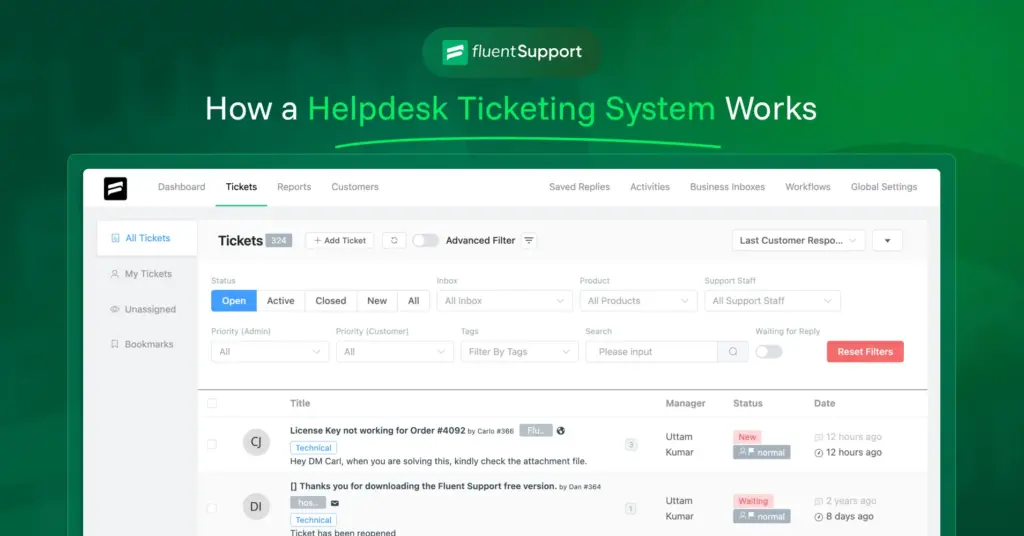
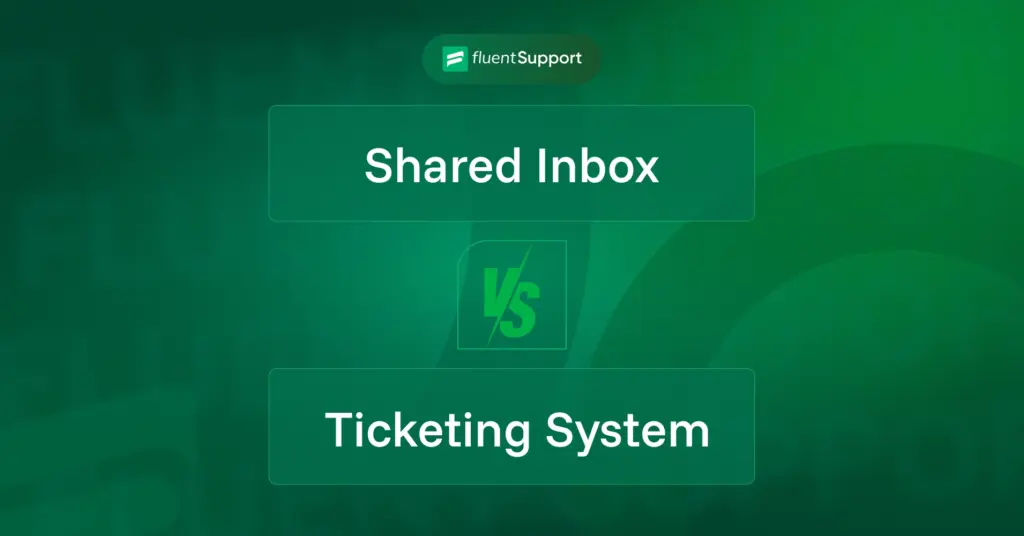
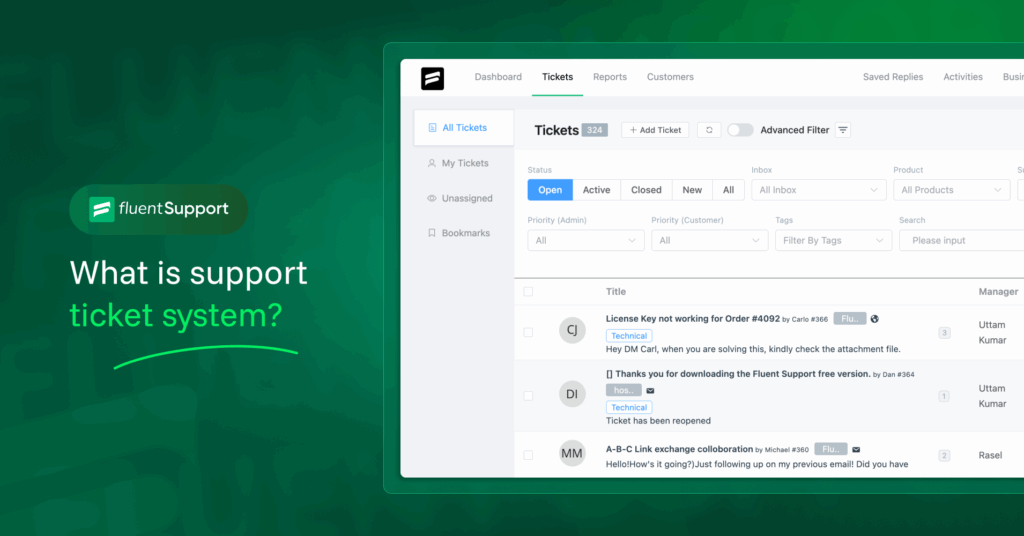
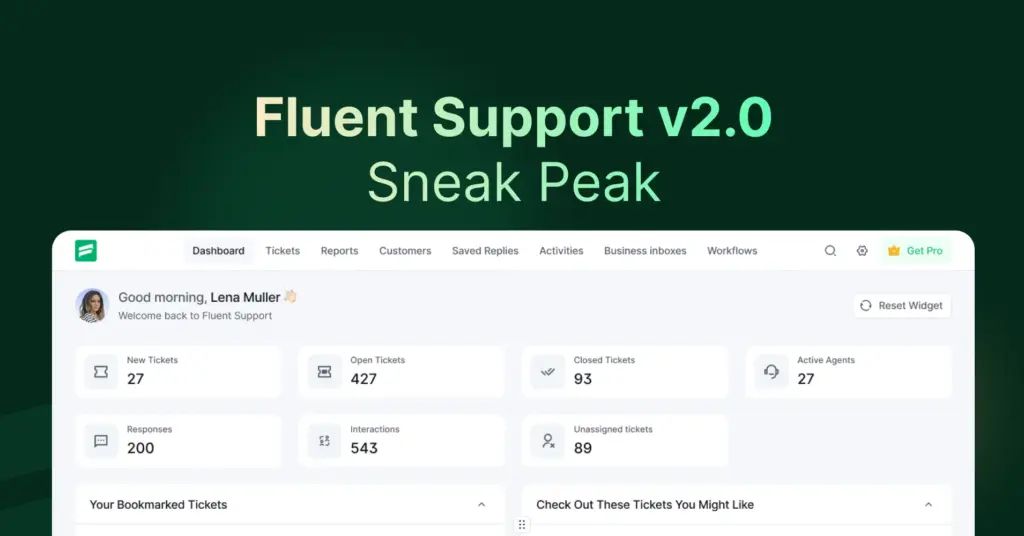

Leave a Reply